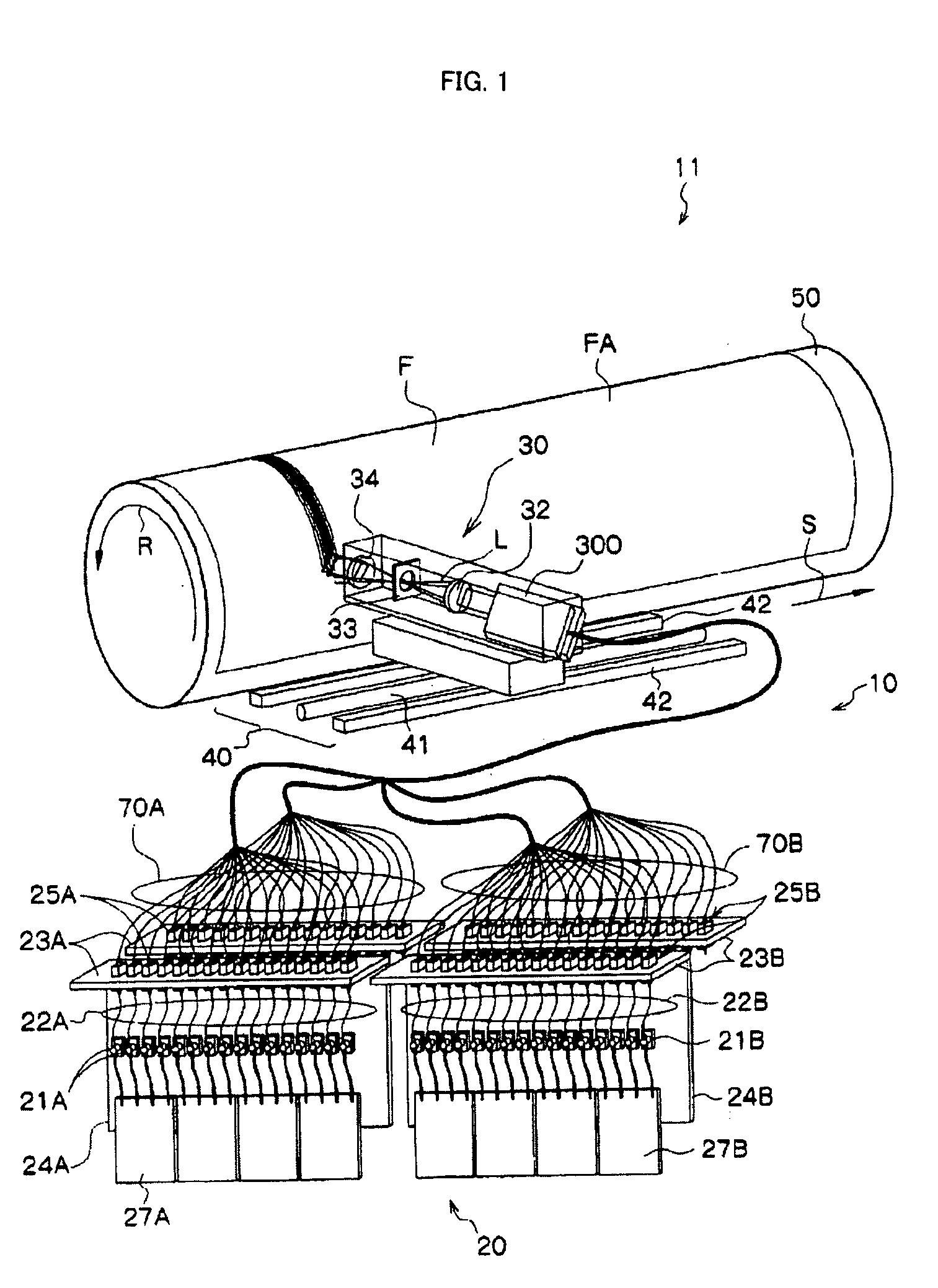Relief printing plate precursor for laser engraving, relief printing plate, and method of manufacturing relief printing plate
a printing plate and laser engraving technology, applied in the field of laser engraving relief printing plate precursors, and relief printing plate manufacturing methods, can solve the problems of deterioration in printing durability, plate making process requires time and cost for the production of original image films, and relief layer has poor resistance to hydrophobic inks such as ultraviolet inks, etc., to achieve good water resistance, poor resistance to hydrophobic inks, and good water resistan
- Summary
- Abstract
- Description
- Claims
- Application Information
AI Technical Summary
Benefits of technology
Problems solved by technology
Method used
Image
Examples
example 1
[0446]1. Preparation of Crosslinkable Resin Composition for Laser Engraving
[0447]In a three necked flask equipped with a stirring blade and a cooling tube, 50 parts by mass of polyvinylbutyral (trade name: BL-1, manufactured by Sekisui Chemical Co., Ltd., Mw: 19,000) as the specific polymer (A), 1 part by mass of carbon black (trade name: KETJEN BLACK EC60OJD, manufactured by Lion Corporation) as the photo-thermal conversion agent (E), 20 parts by mass of diethylene glycol as the plasticizer, and 47 parts by mass of ethanol as the solvent were charged and heated while stirring at 70° C. for 120 min to dissolve the specific polymer (A). Further, the resultant was cooled 40° C., and added with 15 parts by mass of an ethylenically unsaturated monomer M-1 having a chemical structure shown below, 13 parts by mass of hydroxyethyl (meth)acrylate (trade name; BLEMMER PME200, manufactured by NOF Corp.), and 1 part by mass of t-butyloxybenzoate (trade name: PERBUTYL Z, manufactured by NOF Cor...
PUM
| Property | Measurement | Unit |
|---|---|---|
| glass transition temperature | aaaaa | aaaaa |
| glass transition temperature | aaaaa | aaaaa |
| wavelength | aaaaa | aaaaa |
Abstract
Description
Claims
Application Information
 Login to View More
Login to View More - R&D
- Intellectual Property
- Life Sciences
- Materials
- Tech Scout
- Unparalleled Data Quality
- Higher Quality Content
- 60% Fewer Hallucinations
Browse by: Latest US Patents, China's latest patents, Technical Efficacy Thesaurus, Application Domain, Technology Topic, Popular Technical Reports.
© 2025 PatSnap. All rights reserved.Legal|Privacy policy|Modern Slavery Act Transparency Statement|Sitemap|About US| Contact US: help@patsnap.com



